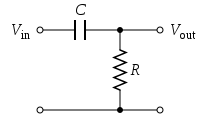The Way Huge Pork Loin pedal is pretty cool as it allows you to blend the signal from a clean preamp based on the Neve 1073 with the overdrive signal. However I was going to sell it because the bass was boomy using a neck humbucker.
I decided to look for a schematic instead and ran across a mod which may have already been incorporated in the newer pedals.
https://www.talkbass.com/threads/pork-loin-mod.1088576/

Note: While the author recommends replacing C34(1nF) with a 470pF cap it looks like newer pedals use a 220pF cap there.



Steve Ahola
I decided to look for a schematic instead and ran across a mod which may have already been incorporated in the newer pedals.
https://www.talkbass.com/threads/pork-loin-mod.1088576/
Note: While the author recommends replacing C34(1nF) with a 470pF cap it looks like newer pedals use a 220pF cap there.
Steve Ahola



Comment